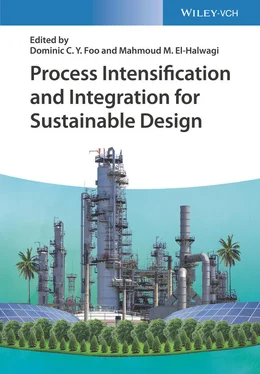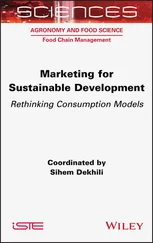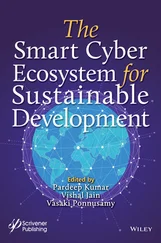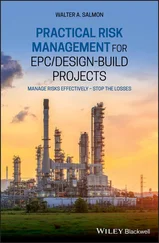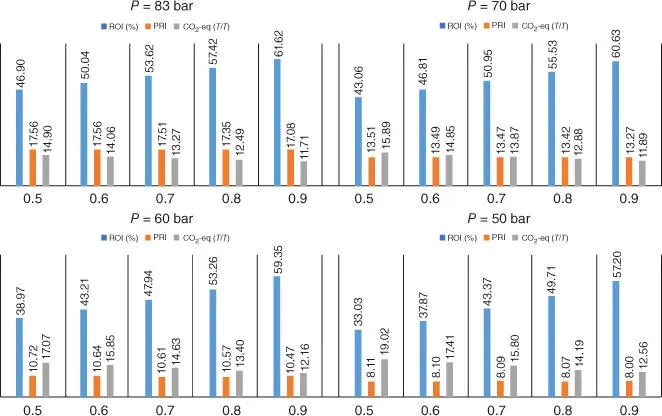
Figure 1.1Safety, sustainability, and economic indicator for different pressures and recycling fractions in the methanol production process.
It should also be noticed that the methanol synthesis reaction is exothermic; therefore, heat integration options may be considered to further enhance the environmental and economic performance of the process.
Ethylene is a major building block used in the chemical industry to produce a wide variety of important chemicals. The increasing availability of shale gas has boosted the ethylene industry as several ethylene production plants have been planned to be built in the United States [5]. The alternatives to produce ethylene include processes that use NGLs as feedstock, such as ethane cracking or propane dehydrogenation [25], and processes that transform methane to ethylene [26,27]. Among the processes that convert methane to ethylene, two important options are the oxidative coupling of methane (OCM) and the methanol to olefins (MTO) technology. OCM is a direct process in which methane and oxygen are fed to a catalytic reactor, with the products of the reaction being separated in a purification stage that consists of the removal of water and CO 2and a cryogenic distillation train [26]. Although this process is known for the low yield achieved in the reactor, which render a process option with low profitability, the development of new catalyst structures has made possible the construction of demonstration facilities for this technology that offer better economic perspectives [28].
The other alternative for ethylene production is MTO, which is a more complex process as it involves several stages. First, the reforming of natural gas and the production of methanol take place. After the methanol synthesis, the crude methanol is sent to a catalytic reactor where low‐weight olefins are produced. In the reactor a variety of components are produced, such as ethylene and propylene, butylene, C 5s, hydrogen, low‐weight hydrocarbons, water, and CO 2. The effluent of the reactor is then sent to separation and purification units, which start with CO 2removal and dehydration units. Then, the remaining stream is sent to a distillation train consisting of demethanizer, deethanizer, and depropanizer columns, as well as C 2and C 3splitters. A column to separate C 4s and C 5s is also needed. The overall process is very energy intensive, as it involves a reforming stage and a large distillation train.
Even when the MTO technology has been reported to be more profitable than the OCM option [26], the latter technology is less complex and avoids the need to transform the natural gas to intermediate products such as syngas. That provides an incentive to develop improvements to this technology in order to enhance its overall performance and profitability. Proposed ideas to achieve such improvements include the use of membranes in the CO 2separation system and modifications to the ethylene fractionation column to reduce heating and condenser duties [29,30].
Benzene is an important starting molecule in the petrochemical industry. The production of benzene from shale gas was considered in Pérez‐Uresti et al. [31], and a process based on the direct methane aromatization (DMA) route was designed. In this process, methane is fed to a DMA reactor operating at 800 °C and atmospheric pressure. The main products of the reaction are benzene and hydrogen. The effluent from the DMA reactor is sent to a membrane unit to separate the hydrogen. Then, the remaining stream is cooled and compressed to be separated in a flash tank. The gas stream obtained from the flash separator is methane‐rich and is recycled to the DMA reactor. The liquid stream is fed to a distillation column where benzene is obtained as a top product. Although the DMA process competes with the traditional production routes based on catalytic reforming or steam cracking of liquid petroleum feedstocks, it represents an attractive alternative given the low prices of natural gas.
Propylene has typically been produced as a byproduct either from the steam cracking of naphtha to produce ethylene or from the fluid catalytic cracking to produce gasoline. With the shale gas boom and the excess of NGLs such as ethane, the production of ethylene has switched the feedstock from naphtha to ethane. This action has eliminated the production of propylene as a byproduct, opening an opportunity for the development of on‐purpose propylene production processes. The alternatives to produce propylene from shale gas include two options via methanol and one using the propane obtained from the purification of shale gas [32,33]. The processes to produce propylene via methanol are the MTO route and the methanol to propylene (MTP) process [33]. The MTO process is described earlier in the ethylene section. MTP follows a similar path. First, natural gas is transformed into syngas gas using a reforming alternative, and then the syngas is transformed into methanol. As opposed to the MTO process, where crude methanol is sent to the MTO reactor, methanol has to be purified for its use as feedstock for the MTP process. Therefore, the crude methanol obtained from the methanol synthesis reactor is sent to a flash unit and purified using a distillation column. The purified methanol is then fed to a reactor, where it is converted to dimethyl ether and water. Then, the outlet stream of the reactor is sent to a fixed bed catalytic reactor to produce propylene. The effluent from the fixed bed reactor contains propylene, gasoline, and LPG, as well as water. It is sent to a flash unit to remove water and the remaining stream is purified using distillation columns.
Another alternative for the production of on‐purpose propylene is the propane dehydrogenation process, in which a depropanizer column is used to separate C 4+compounds that may be present in the fresh material. The purified propane enters a cold box to refrigerate the effluent from the propylene production reactor. Then, the propane stream is mixed with hydrogen and sent to a fired‐heater before being fed to a fluidized catalyst bed reactor. The reaction is highly endothermic. The outlet stream of the reactor contains propylene, propane, light gases, ethane and ethylene, and some heavier hydrocarbons. The reactor effluent is cooled, compressed, and sent to a cool box where hydrogen is separated from the hydrocarbons. The liquid stream from the cold box is sent to a selective hydrogenation process (SHP) to further improve the production of propylene. The effluent from the SHP is fed to a deethanizer column to remove light gases. Finally, the remaining stream is fed to a C 3‐splitter column to produce the propylene. The propane obtained at the bottom of the splitter column is recycled to the depropanizer column [32].
These processes represent an excellent opportunity for the independent production of propylene instead of obtaining it as a byproduct of other processes.
1.11 Process Intensification Opportunities
The incentive for shale gas monetization can also be viewed as an opportunity to develop intensified processes for shale gas transformation technologies. Recent efforts to design intensified processes have been observed. Process intensification is understood here as a search for more competitive process alternatives via the development of more compact flowsheets (i.e. with fewer pieces of equipment or smaller sizes of the same number of equipment units) and/or with a reduction on the consumption of basic resources (raw materials, energy) through more efficient designs.
Читать дальше
